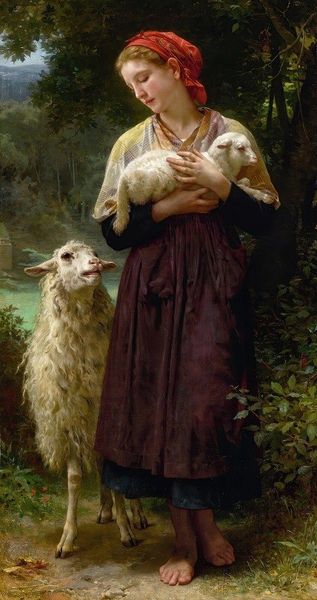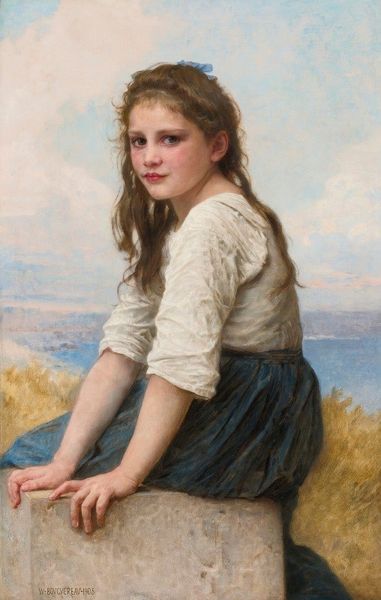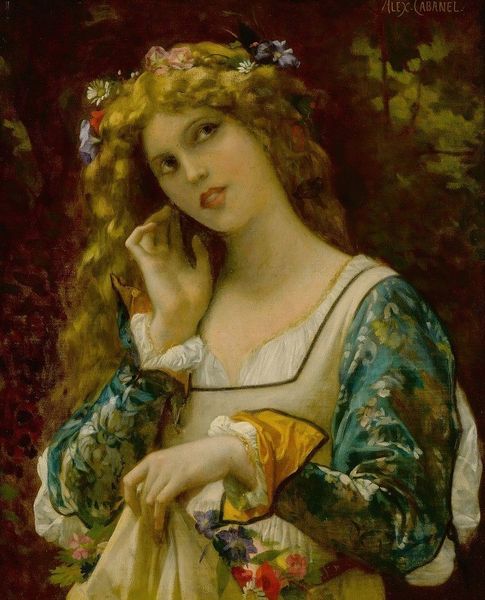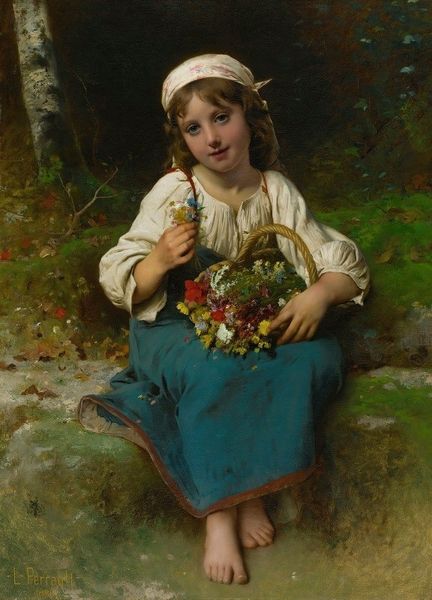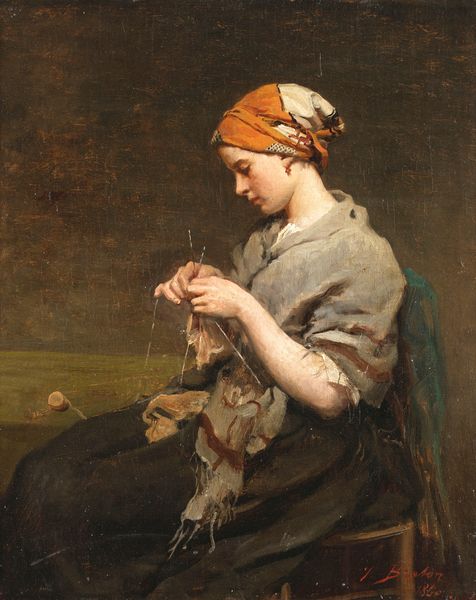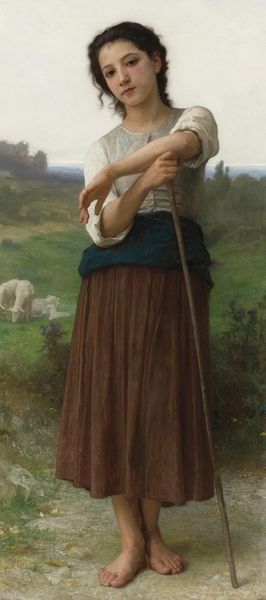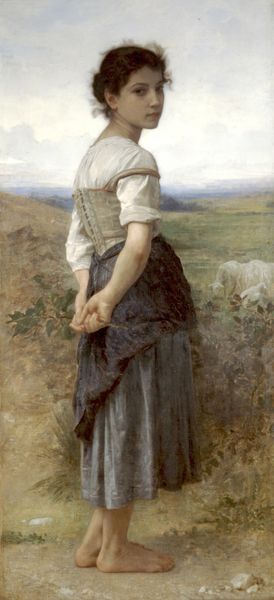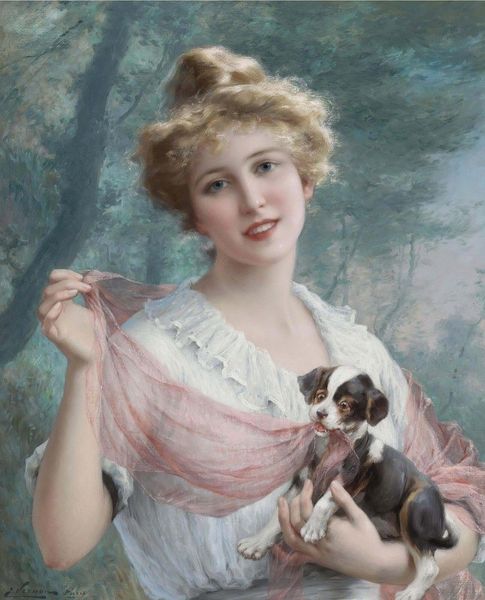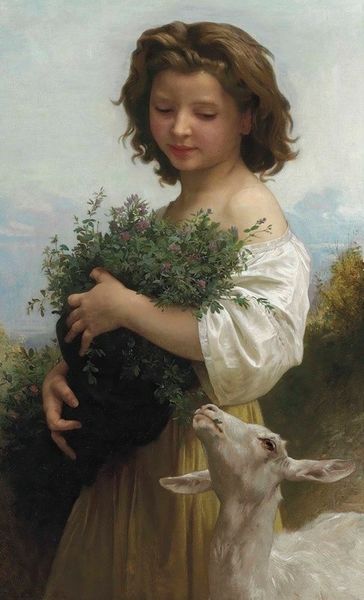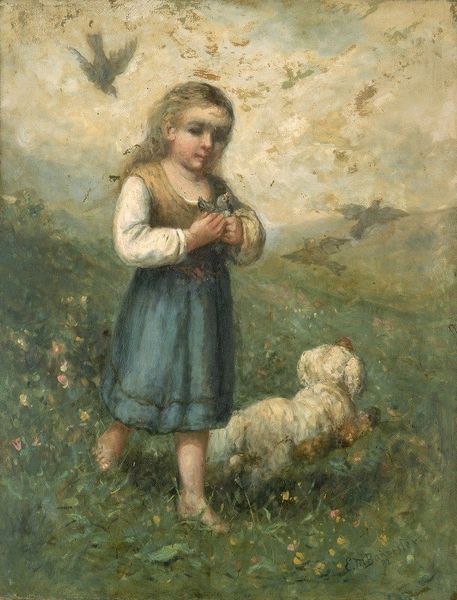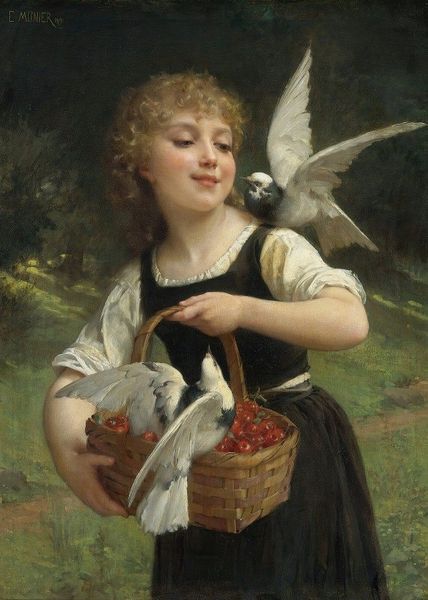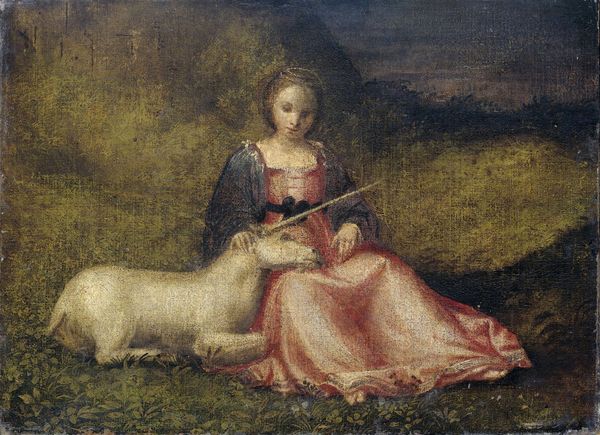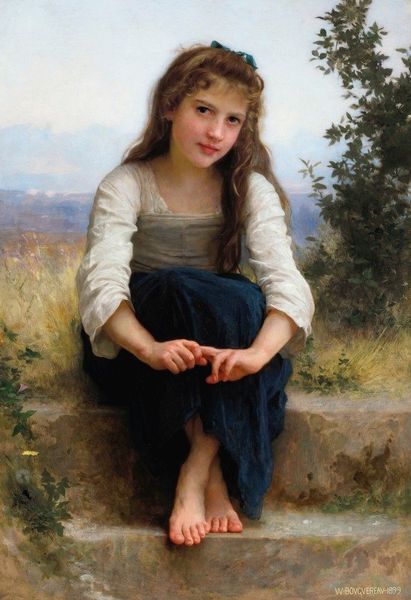
Copyright: Public Domain: Artvee
Editor: This is William Bouguereau’s "Innocence" from 1873, done in oil paint. I'm struck by the girl's downcast gaze and the tenderness with which she holds the lamb. How would you interpret this work, focusing on the materials and production? Curator: Consider the societal pressures and consumer desires influencing Bouguereau’s selection of oil paint – its inherent potential for realism aligning perfectly with academic expectations of his time. Think about how the layers of paint, carefully applied, become a manufactured object intended to please the art market. Do you see any evidence of labor within the materiality of the artwork? Editor: Well, the smoothness of the skin suggests an incredible amount of blending and refining, it looks like a long process. It seems far removed from raw, unprocessed materials. Curator: Exactly. The highly refined, almost photographic realism denies the evidence of the hand. Look at the shawl draped across the girl – how might we consider its materiality and production in relation to the overall "Innocence" depicted? Editor: That's interesting, the manufactured textile contrasts against this notion of rural simplicity that is reinforced by the landscape, and the lamb she is holding. The means of production become almost a subject here. Curator: Precisely. Bouguereau’s "Innocence" becomes a complex dialogue between labor, material culture, and the idealized visions of innocence so desired by the bourgeoisie he served. What does analyzing its production reveal about the work that simply noting its aesthetic qualities would miss? Editor: I hadn't thought of it that way. Deconstructing the labor and the material involved shifts the reading so much! Instead of accepting it at face value, now it feels more manufactured, like a staged tableau almost. Thank you for the different perspective!
Comments
No comments
Be the first to comment and join the conversation on the ultimate creative platform.
